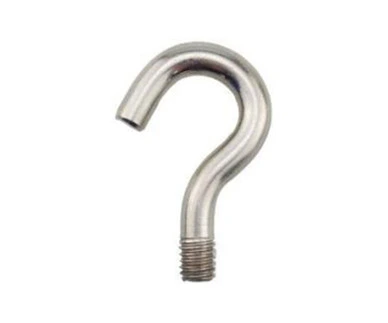Differences between AlNiCo magnets and ferrite magnets
Appearance:
Ferrite magnets are soft and without metallic luster, usually not electroplated, and often black in color with a density of about 5.0g/cm3. AlNiCo magnets have a metallic luster and high density of about 7.4 g/cm3.
Magnetic properties:
The remanence of ferrite is lower and its recoil permeability is smaller. Its coercivity is larger with a stronger resistance to demagnetization, making it particularly suitable for dynamic working conditions in magnetic circuit structures. The remanence is generally around 4000GS. AlNiCo magnets have a remanence of up to 12600GS under bare magnetic conditions with low temperature coefficient. However, their coercivity is very low (usually less than 160kA/m), and their demagnetization curve is non-linear, making them easy to magnetize but also easy to demagnetize.
Temperature resistance:
Ferrite magnets have good temperature and stability, but their maximum operating temperature is lower than ALNICO magnets. The maximum operating temperature of different grades of ferrite magnets is about 100-200 degrees Celsius. AlNiCo magnets have high remanence, good temperature resistance, and can operate up to 550 degrees Celsius.
Corrosion resistance:
Both ferrite permanent magnets and AlNiCo permanent magnets are corrosion-resistant and do not require surface coatings. This is because the ferrite magnet itself is mainly made of SrO or BaO and Fe2O3, while nickel and cobalt, the main components of AlNiCo permanent magnets, are also major components of stainless steel.
Cost:
Ferrite is a relatively cheap material, and many are priced by piece based on its shape, size, and processing difficulty. AlNiCo magnets, on the other hand, are relatively expensive due to the high cost of their main raw materials, such as nickel and cobalt, and depend on the specific grade and special requirements needed.
Applications of AlNiCo magnets and ferrite magnets
AlNiCo magnets have strong magnetism, high cost performance, high temperature resistance, versatility, strong corrosion resistance, and oxidation resistance. They have excellent magnetic properties and good thermal stability, with a Curie temperature of about 860-900℃ and an operating temperature of about 550℃, and good chemical stability in the air. These advantages make them widely used in instrumentation and other fields. Ferrite magnets are permanent magnets made mainly of SrO or BaO and Fe2O3. Compared with other permanent magnets, ferrite magnets are hard and brittle, with lower magnetic energy, but their main raw materials come from ferrites (commonly known as "rust"), making them cheaper than other permanent magnets. As a result, ferrite magnets are currently the most widely used permanent magnetic materials, from motors to speakers, toys, and crafts.
 English
English 日本語
日本語 한국어
한국어 français
français Deutsch
Deutsch Español
Español italiano
italiano русский
русский português
português العربية
العربية





